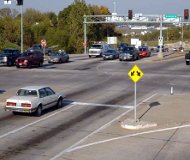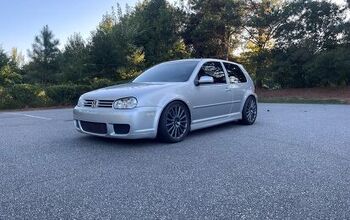Missouri: Violations Still Down With Longer Yellows
Photo enforcement advocates downplay the benefit of increased yellow time in addressing the problem of red light running. New evidence from Arnold, Missouri shows that red light cameras continue to flash at a much lower rate since the state mandated longer signal timing at a number of photo-enforced intersections.
Arnold was the first jurisdiction in the Show Me State to allow a private company, American Traffic Solutions (ATS), to mail traffic tickets to residents. Since 2005, ATS has handed out more than 30,000 tickets worth over $3.1 million. In 2010, tickets were being pumped out at an average rate of 800 per month. With longer yellows, that figure averaged just 113 through July and August using the most up-to-date data available.
While a difference of 0.4 to 1.0 seconds in the length of the yellow light might seem insignificant, the extra margin of safety is critical. The vast majority of straight-through red light “violations” happen when a driver misjudges the end of the yellow light by less than 0.25 seconds — literally the blink of an eye ( view Texas Transportation Institute (TTI) chart). With those longer yellow times, the city and ATS are losing $780,000 in annual revenue — an 86 percent drop.
The Insurance Institute for Highway Safety’s former top researcher, Richard Retting, argued strongly against the use of yellow signal timing beyond the bare ITE minimum values. His research is cited by the Federal Highway Administration (FHWA) in its “Toolbox of Engineering Countermeasures,” which is used by cities to set up intersections prior to the use of automated ticketing machines.
“Present thought is that longer intervals will cause drivers to enter the intersection later and it will breed disrespect for the traffic signal,” the FHWA document explains. “The tendency for motorists to adjust to the longer interval and enter the intersection later is referred to as habituation. The before-and-after study by Retting and Greene evaluated the presence of habituation to the longer yellow… The authors concluded that habituation to the longer yellow did exist….”
Retting is now employed by a red light camera company.
[Courtesy: Thenewspaper.com]
More by The Newspaper
Latest Car Reviews
Read moreLatest Product Reviews
Read moreRecent Comments
- Zipper69 Why the choice of a four door shell.Packing this tech into Stinger would have been awesome.
- Eric I have no desire to have an EV. Too expensive, no charging facilities within 50 miles are even planned, unproven technology, arguably even more environmentally harmful than ICE vehicles. Besides being a status symbol and to signal virtue, what's to like?
- Zipper69 Alfa Romeo Europa
- MGS1995 I wish my hybrid was a plug in hybrid but I’m not interested in an electric only vehicle. I’m in a rural area which probably will be late in getting the needed infrastructure.
- FreedMike Um, OK. EVs are just cars, folks. I have no idea why they take up so much rent-free space in some folks' heads.


































Comments
Join the conversation
Blindly adding seconds is a half-assed way to correct short traffic lights in clear violation of the FHWA MUTCD. There is a formula. It is referred to as the Kell and Fullerton Light Duration Equation. The FHWA has a pamphlet you can download titled "Field Guide for Inspecting Signalized Intersections to Reduce Red-Light Running" (fguide_isirlr.pdf) It shows you how to use the formula to do the math for an intersection. 5.8 seconds covers 85% of all normal intersections. 4.6 seconds is about the shortest you come up with for a narrower intersection. Less than 4.6 seconds? Get a hangnail in the intersection and sue the city back to the beginning of civilization. Dick Retting is not someone I'd want involved in anything to do with signalized intersections.